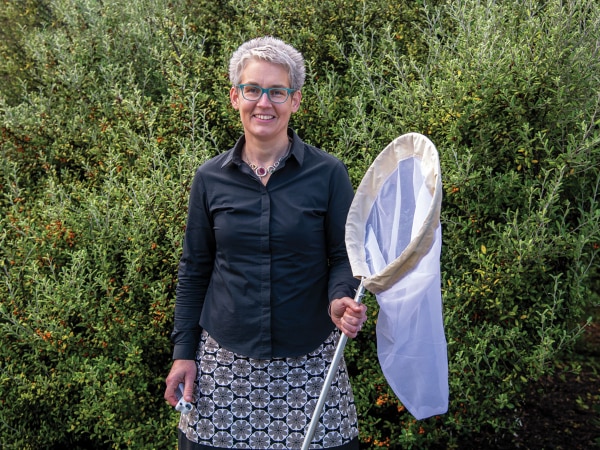Sophie Preece
Luring wētā away from the “buffet” of budburst is a potential outcome of research into the native insect munching Awatere Valley vines.
The project, funded by the New Zealand Wine Futures Fund, seeks to develop an environmentally and economically sustainable solution to the growing problem of ground wētā, Hemiandrus bilobatus, grazing tender foliage in spring.
“That’s a real challenge,” says Dr Jessica Vereijssen, a crop protection entomologist at Plant & Food Research, who is used to working with introduced pest species like the meadow spittle bug, a potential vector for Xyella fastidiosa. “With a lot of the horticultural pests we work with, the last option – if you can’t find a solution – is always to spray them with a pesticide. With the wētā, we have to make sure it stays alive and that we don’t affect it.”
The three-year project will build on work already done by Lincoln University and Massey University, and on the existing management tool of wrapping plastic sleeves around vine trunks to deter wētā from accessing the shoots.
The NZWFF is funded through New Zealand Winegrowers levies and project managed by Bragato Research Institute (BRI). The wētā project has co-funding from Indevin, Pernod-Ricard, Yealands and Hortus to support a PhD student.
Read more about the project in the latest New Zealand Winegrower magazine.

















